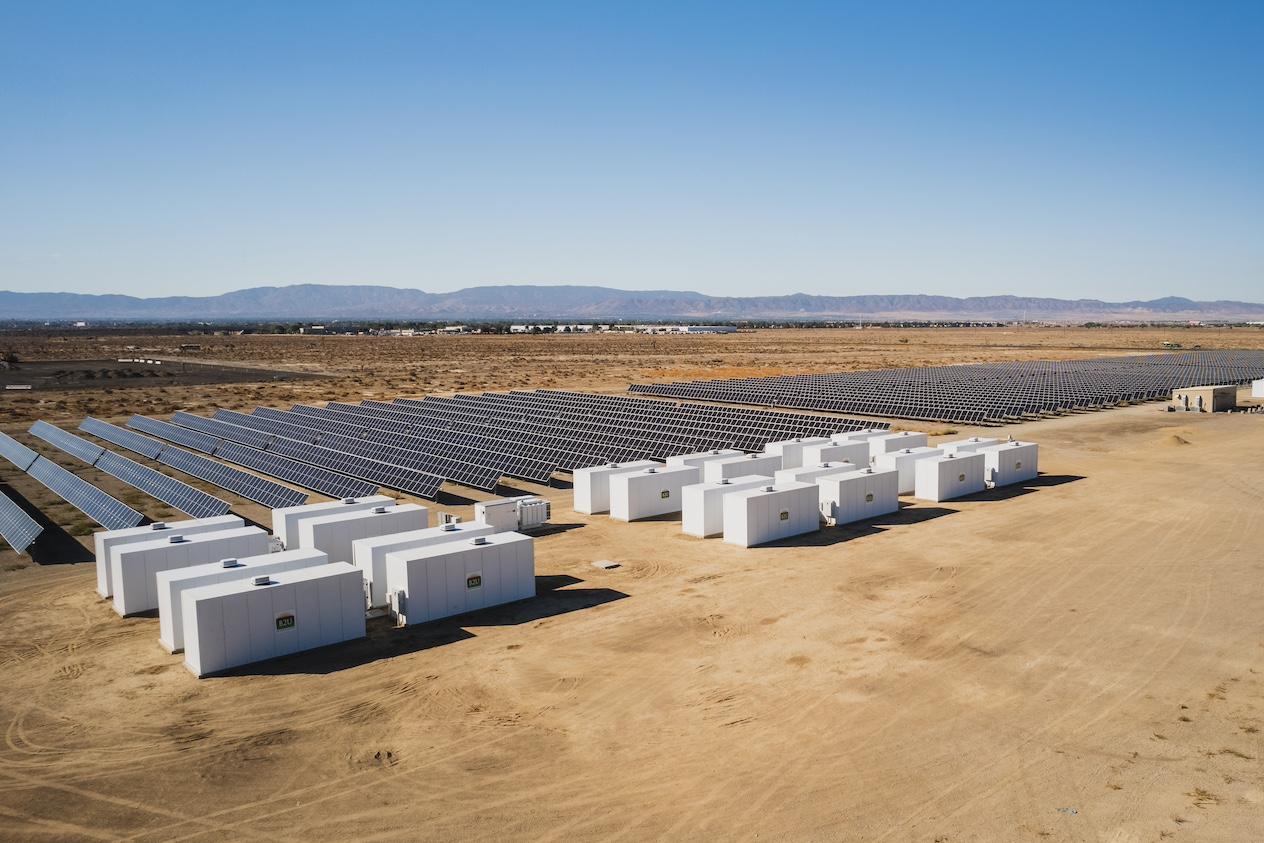
B2U Storage Solutions' SEPV Sierra facility in Lancaster, California, uses second-life electric vehicle batteries and solar panels to to generate and store energy. (Image courtesy of B2U Storage Solutions.)
Despite new federal tax and spending policies threatening to put a damper on electric vehicle (EV) sales in the United States, signs of long-term strength continue to emerge. Investment in the EV charging network is accelerating, and automakers anticipate that new low-cost batteries will make EVs more affordable within the next two years. Plus, activity in the second-life EV battery field is rising, extending the value of batteries beyond their use in vehicles.
The second-life EV battery market: Using AI for good
Electric vehicles have already assumed the character of transportable energy storage devices on wheels. New systems enable EVs to discharge electricity into homes and other buildings when needed. An EV battery can also be used to power electric tools and other devices, and multiple batteries can be coordinated to improve grid resiliency.
Like any rechargeable battery, EV batteries gradually lose capacity over time. Once it reduces to about 70 or 80 percent, they are considered no longer suitable for use in vehicles. But that capacity is still sufficient for stationary energy storage systems.
Re-using EV batteries for energy storage is easier said than done. The batteries must be collected and shipped to a repurposing facility. Damaged or otherwise unsuitable batteries must be identified and weeded out. And the suitable ones must be assessed and rehabbed or repaired as needed. All of this adds a considerable amount of time and expense to the second life process.
In the meantime, the cost of new-built batteries continues to drop, creating an additional challenge. But new diagnostic tools have transformed the second-life market into a more economical venture. The firm Precedence Research is among those crediting artificial intelligence (AI) for the difference.
“Artificial intelligence is revolutionizing the second-life electric vehicle batteries market by improving battery diagnostics, predictive analytics, and energy management systems,” according to a Precedence Research report. “AI algorithms analyze the health and charge cycles and predict battery degradation and remaining useful life … AI guarantees that only high-quality batteries are repurposed, enhancing their performance and longevity.”
The renewable energy connection
Though EV battery packs are individually small, second-life innovators can combine them into utility-scale systems. They can be used to capture excess energy from wind or solar arrays and perform storage services for the grid at large.
The startup B2U Storage Solutions, for example, targets grid-scale applications with its second-life EV battery business in California and Texas, two states with copious amounts of wind and solar energy.
The company launched its first facility, the SEPV Sierra project, five years ago in Lancaster, California. It combines more than 1,300 EV batteries for 28 megawatt-hours of capacity. The system soaks up excess energy from the local grid and daytime energy from on-site solar panels. When demand rises at night, the batteries discharge electricity into the grid.
In 2023, B2U commissioned its second system in Santa Barbara County, California. Called the SEPV Cuyama project, it has 12.5 megawatt-hours of capacity. B2U also plans to convert an existing solar-only, second-life storage system in Palmdale, California.

More energy storage for Texas, stat
B2U’s first out-of-state project is slated for Bexar County, Texas, where the data center construction boom sparked the demand for more energy, more quickly. That is a particularly difficult proposition for Texas. The Lone Star State is almost entirely cut off from electricity-sharing programs with neighboring states, forcing it to rely primarily on in-state power generation resources. Though state legislators in Texas have pushed the case for more fossil fuel power plants, energy storage systems can help fill the gap by allowing grid operators to maximize the use of in-state resources, including wind and solar.
Energy storage systems can also be up and running much faster than fossil fuel power plants. The new B2U project is a case in point. The 24 megawatt-hour project celebrated its official groundbreaking earlier this week, and B2U expects it to be grid-connected and fully operational before the end of the year.
The Bexar County project is just the beginning of B2U’s plan for Texas. By the summer of 2026, the startup plans to deploy three more second-life systems for grid energy storage, reaching 100 megawatt-hours in all.
A circular economy for the EV movement
Despite rising activity in the second-life industry, the market for energy storage systems continues to be dominated by new, purpose-built batteries. As the global demand for EVs continues to surge, second-life stakeholders can take advantage of an ample pipeline of batteries in the years to come, providing new opportunities to carve out additional market share.
Second-life stakeholders can also attract energy storage developers seeking a pathway into the circular economy. By extending the lifespan of EV batteries prior to recycling, the second-life industry conserves lithium and other valuable resources, while also reducing carbon emissions related to mining and battery manufacturing. Advocates also point out that second-life use reduces waste and eases the global price pressure on lithium and other battery materials, helping to keep the cost of EVs down.
The research firm MarketsandMarkets estimates that the global second-life battery market will grow by over 25 percent by 2030, driven by the increased demand for renewable energy and economical energy storage systems, and supported by an ever-increasing pool of retired EV batteries.
All of this activity is continuing apace, despite the loss of the $7,500 federal EV tax credit under the new “One Big Beautiful Bill Act.” The tax credit expires on September 30, but the vehicle electrification movement will carry on.

Tina writes frequently for TriplePundit and other websites, with a focus on military, government and corporate sustainability, clean tech research and emerging energy technologies. She is a former Deputy Director of Public Affairs of the New York City Department of Environmental Protection, and author of books and articles on recycling and other conservation themes.














